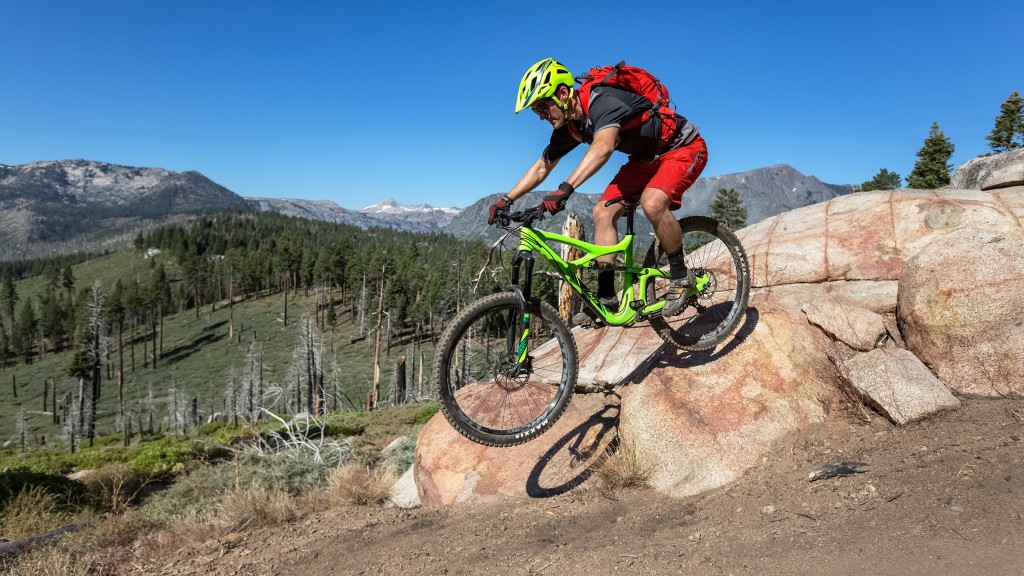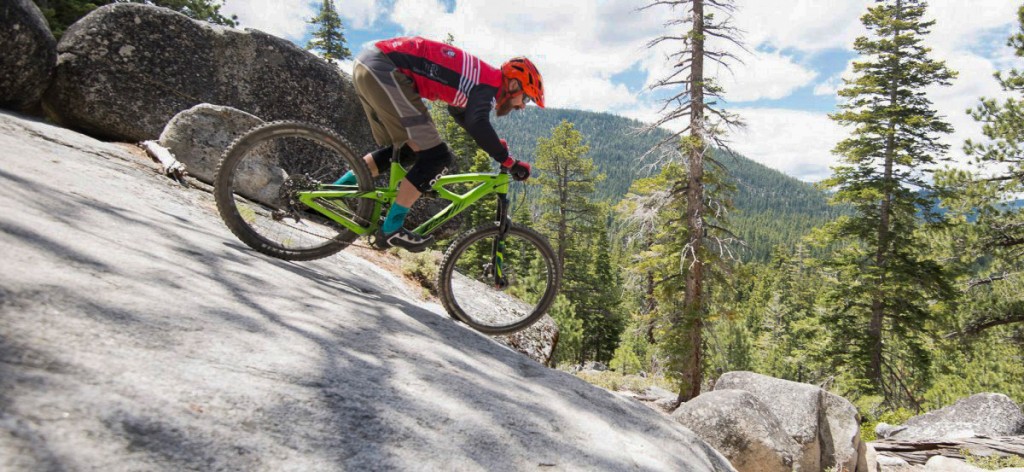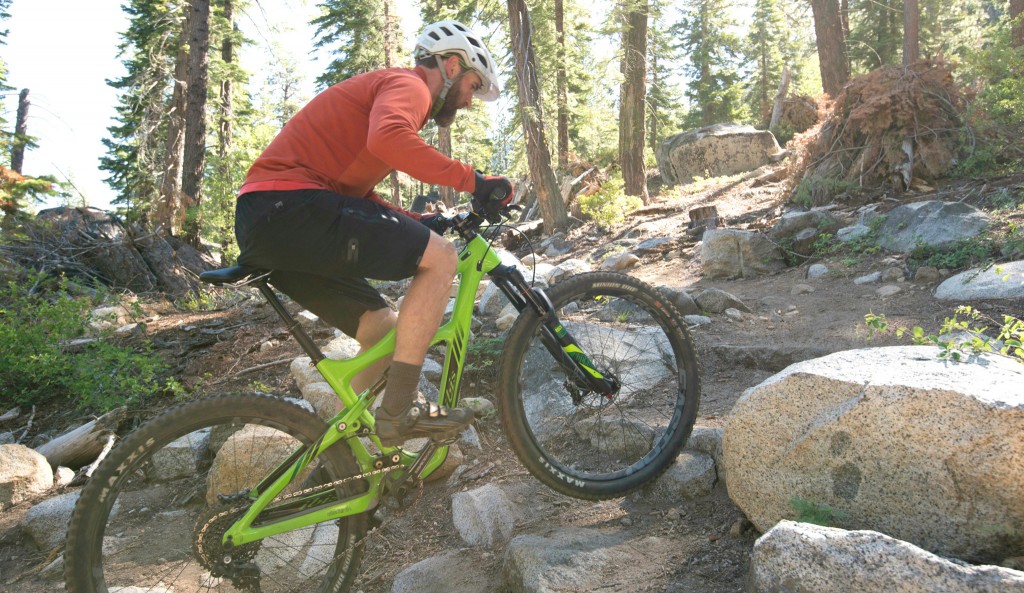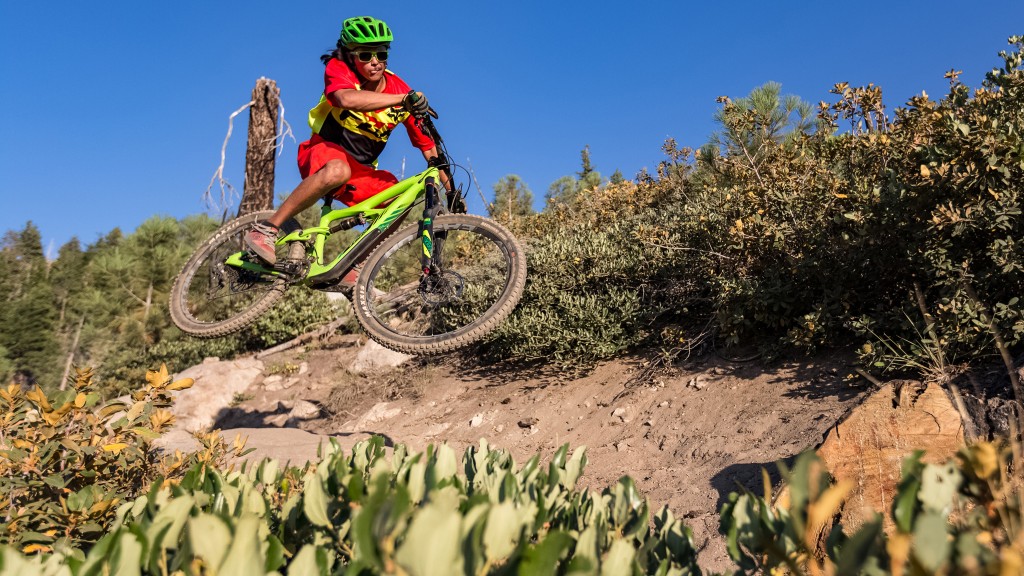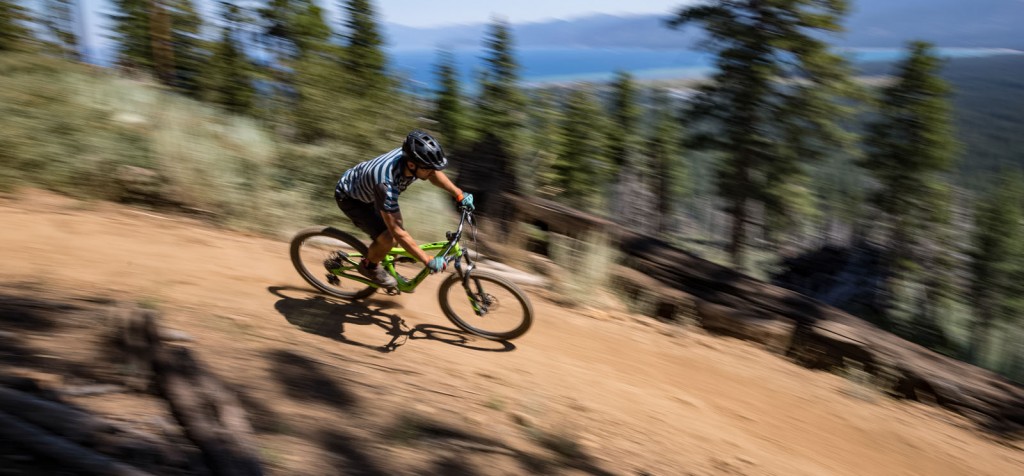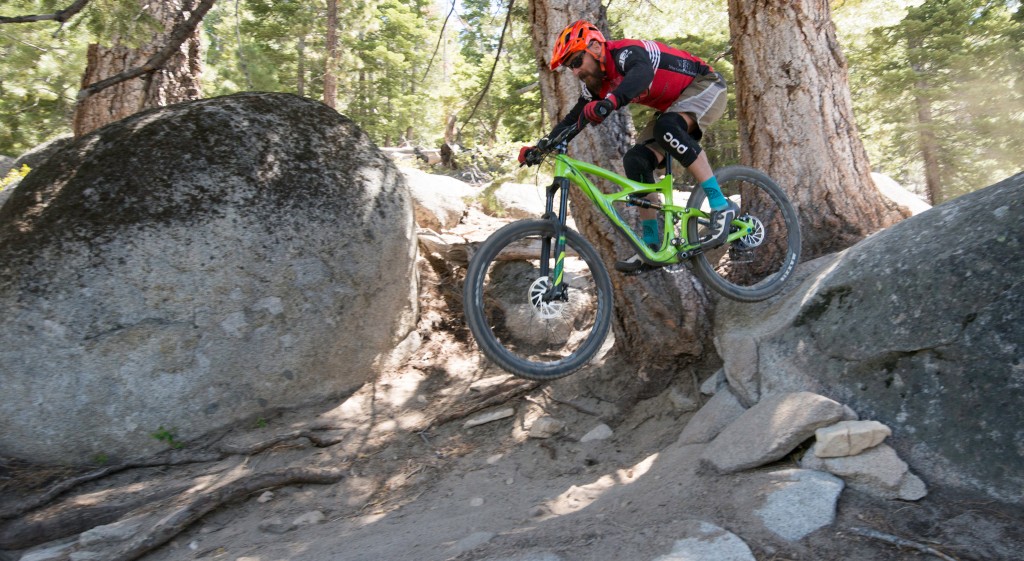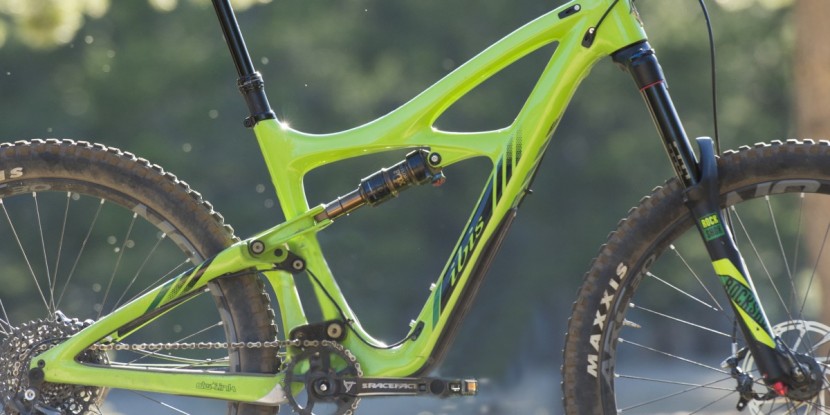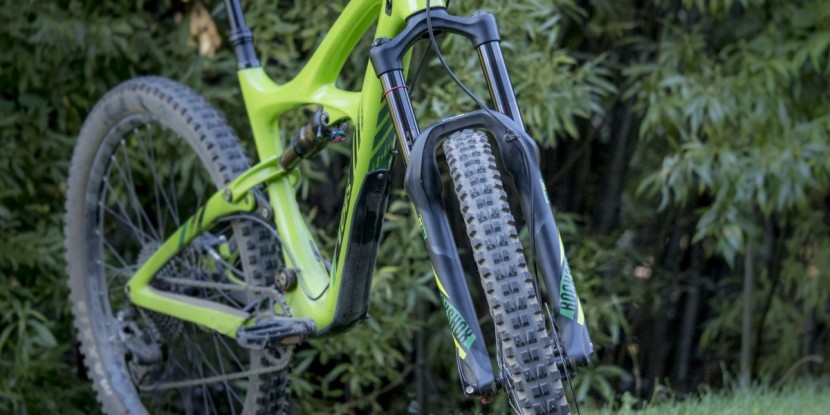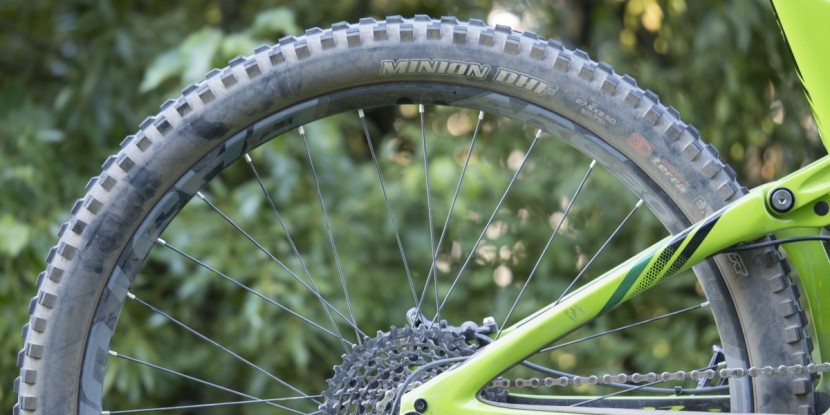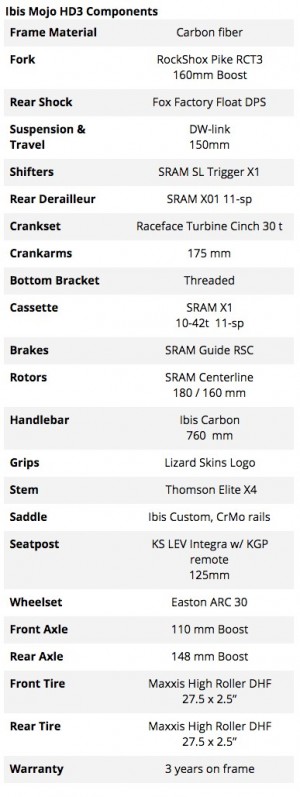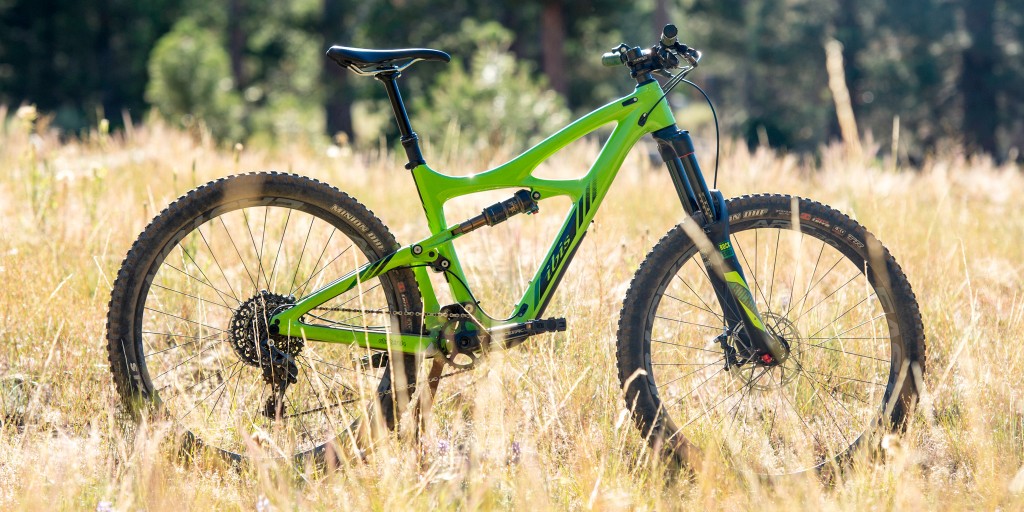Ibis Mojo HD3 X01 2016 Review
Our Verdict
Our Analysis and Test Results
Four testers ran five top enduro mountain bikes through our rigorous all-mountain and benchmark testing process. The team rode the bikes hundreds of miles and raced them head-to-head in systematic time trails. The Mojo HD3 squared off against the 2016 Santa Cruz Nomad, 2016 Yeti SB5.5c, 2016 Pivot Mach 6, and the 2016 Specialized Enduro Expert. Read on to see how the Ibis compares to the best in the world.
Best Applications
The Mojo HD3 will get you down almost anything but is at its best on smoother trails with lots of turns, playful side features, and techy squeezes. It could race enduro, but we'd switch out the tires for speed. It's a great ride if you head out for the occasional downhill day but mostly hit the less gravity heavy tracks and like your descents on the slower, techy and turny side. If you have so much fun springing around like wheeled deer that you're in no hurry for the trail to end — this bike will keep you in smiles for miles.
Downhill
Out on the singletrack the Ibis Mojo HD3 is nimble, sporty and playful. It makes a boring trail interesting, but can still take big lines. It's capable, but it's just not as fun on rowdy terrain and rocky descents as the Santa Cruz Nomad or Yeti SB5.5c. These bikes are both point-and-shoot downhill mobbers. Your aim barely matters with these two, just pull the trigger. Take the same trail with the Ibis and you'll have a completely different experience. The Ibis requires that you know your line, or can find it quickly, and are heads-up about staying on it. It's certainly maneuverable, letting you fly through narrow slots and swerve around unfriendly obstructions, but that same light steering can twitch out on rough trails at high speeds.
Speed
The downhill performance advantages below, measured in seconds, are the result of racing the Ibis against the other four bikes in the test during our benchmark time trials. To get this done, our three benchmark testers took each bike on repeated timed laps on our downhill race course The Scorpion.
The Ibis places in the middle of the downhill speed rankings, but is well behind our two leading bikes. It enjoys a 1.3-second advantage over the last place Pivot Mach 6 and a 0.5 second lead over the Specialized Enduro. Meanwhile, the Santa Cruz Nomad gains 2 seconds on the Ibis and the Yeti SB 5.5c is a full 4.5 seconds out front.
To stretch that timeline out a bit, the Ibis is 0.4 seconds per minute faster than the Pivot, but 1.2 seconds per minute slower than the Yeti. Thus, if you take the Ibis out for an hour-long course you'll finish 24 seconds before you would have on the Pivot, but 1:12 min:secs slower than you would have on the Yeti.
While the zippy feel and light pedaling seemed racey to our lead tester the other riders never felt that fast on the Ibis. They were too busy having fun, popping off of rock drops on the way down. To be clear, they rode the same lines on all the bikes (a benchmark testing requirement) but thought the pop of the Ibis gave them more vertical air time, possibly slowing times but certainly not dampening spirits.
The extra weight of the 2.5" tires are also assumed to be a culprit in the Ibis Mojo HD3's lackluster time trial results. Though they provided solid traction, they didn't hold as much momentum as competing bikes, making us crank harder to stay at the same speed. Good for our legs, bad for our egos.
Confidence
The Ibis Mojo HD3 has the second slackest head tube angle in the test (measured at 65.4°), but the cockpit provides an upright feeling that — when combined with a rough-riding rear suspension and light steering that can get squirrelly at speed — doesn't exactly scream “downhill.” But the Ibis has the best front fork in the test (a boosted 160mm RockShox Pike RCT3), helping us fend off the rocks that gravity kept tossing us into headlong. All-in-all it didn't make us nervous, but it didn't sprinkle us with any fairy dust either, meaning we showed up at the top of every decent with ourselves, our skills and a steady and consistent steed.
The cockpit sets you up in a pleasant position in the center of the bike. We don't have to continually adjust our body position to accommodate the bike size like many of us had to on the Pivot Mach 6, but we frequently have to work for balance. It isn't the auto-downhill setup provided by the laid-back Santa Cruz Nomad. Again, confidence score = neutral.
The upright position put us in a convenient pedaling location, ideal for keeping those tires rolling. The fattier 2.5" rubber hooked up nicely in the turns and kept traction in the rough and rocky sections of trail, taking one worry — washing out — off the table. Acceleration was fast, and while the bike doesn't hold it, it picks up quite a bit of speed. That's when our fastest rider found out that the brakes were vastly underpowered compared to competing bikes. Not being able to slow or stop your maching progress is definitely not confidence inspiring. Nor is the creaking we heard in the headset towards the end of the test. Sure it's an easy fix, but the Pivot was the only other bike in the test to have such an issue.
Handling
In a word, direct. In more words: The boosted 160mm RockShox Pike RCT3 fork on the HD3 contributes to extremely direct steering. The front end is responsive and the bike knows how to hold a line. Light and fast steering keeps the bike nimble when you're spinning along in moderate terrain, responding to your every whim. On the flip side, that means that when things get rough, the bike responds to the trail's every rock — a result of the stiff rear suspension. You've gotta fight back to avoid getting bounced off your line. And you've got to pick one in the first place. In contrast, the Santa Cruz Nomad or Yeti SB5.5c roll over whatever is in their path, but they're harder to move around. The rocks think so, too. Of course, if you do get bounced off line on the Ibis, it's quite easy to recover.
The Ibis can also toss its head when you're braking speed, getting twitchy like a horse who just doesn't want to hear “whoa.”
Suspension and Traction
Tires are the first line of suspension defense. The fatty 2.5" tires on the Ibis offer an iota of extra plushness, but we really only feel it in the fork. And that fork — it inspires sonnets employing every possible word that rhymes with butter. We love it. Between it and the Yeti SB5.5c's excellent boosted 160mm Fox 36 Factory fork we realized, it's the boost stupid. We're sold.
The DW-link rear end with a Fox Factory Float DPS shock, however, rode surprisingly rough, boosted and all. It's choppier than the other rear suspensions on small hits, bottoming out on some of the bigger hits and dinging off others. This was the only rear shock in the test that didn't come standard with a piggybacked reservoir on the mid-price range build (i.e., X01) on the carbon bike. Reservoirs give the oil that controls compression rates a place to get out of the way and cool off, dissipating heat and keeping everything running smoothly. In short, piggybacks improve performance. The Ibis's rear end could benefit. Upgrading to the optional Fox Float x2 would go a long way towards smoothing out that rough rear ride.
But the combination of a great front fork and a comparatively lackluster rear shock worked and still offered a pretty enjoyable ride. Slowing the rebound rate also improved the feel marginally, but it was still one the roughest riding rear ends in the test. In contrast, the Pivot Mach 6's fork tended toward the soft side due to the bike's short reach, but it had a very plush rear end. So while we sometimes felt like we were riding a wheelie everywhere we went on the Pivot, on the Ibis, we all found ourselves all over the front of the fork.
Climbing
We expected the Ibis to climb well, and it delivered. What we didn't expect was that it would be the second to last bike in the category. Only the Pivot Mach 6 was rated lower for its poor balance, sluggish pedaling and uncomfortable fit. Climbing on the Ibis was similar to descending on it, just in different circumstances. The light steering twitched on the slow and rocky climbs and, while the front end stayed stable, the rear end skipped around in rock gardens. But the firm pedaling platform, efficient pedaling action, lockout compression settings, upright position, and nimble, precise steering worked.
The Ibis lost out due to the sluggish feel of it's 2.5" tires on the climb. None of us wanted to battle with that extra weight and drag all day if a top climbing bike (i.e. the Yeti SB5.5c) was around. And, while the Ibis was nimble, picking the tires up and over the stairs took a lot of fore and aft movement on the bike. The shorter wheelbase could also make timing these maneuvers challenging. Towards the end of the test we came to prefer the climbing style of the longer wheelbase, slacker head tube bikes, i.e. the Yeti and the Santa Cruz Nomad — just pedal into, up and over everything.
As a result, the Yeti SB 5.5c slayed the climbing category scoring well for its efficient pedaling platform and ability to roll over anything. The Santa Cruz Nomad trailed behind but is respectable due to its superior roll-up-and-overness. These two bikes are also more comfortable climbing than the upright Ibis. As one tester said of the Ibis — “It's a great bike. It climbs well, but the Santa Cruz climbs just as well and is more fun downhill.”- -Speed--
That equates to a 0.2 second per minute gain over the Pivot and a 2.7 second per minute loss to the Yeti. Translation: if you pick the Ibis for an hour-long climbing course, you will finish about 12 seconds before you would have on the Pivot but 2:42 min:secs after you would have on the Yeti.
Pedaling
The Ibis Mojo HD3 has one of the best pedaling sensations and was among the fastest accelerators in the test, alongside the Specialized Enduro Expert. The pedaling platform is solid, and the rear suspension doesn't vary much with the pedal stroke, no annoying lurch here. Despite initial comparisons to the Pivot — due to their shared DW-link suspension — over time, we noticed that some pedal power is lost to the Pivot's rear end.
While we loved the super-efficient feel in and out of the saddle, the 2.5" tires that came spec'd on the bike increased the amount of rotational weight, which drove our light-and-fast oriented tester batty. These factors keep the Ibis from maintaining much momentum, which kept us from those glorious coasting moments we love so well. There was nothing for it; we just had to keep pedaling.
- -Handling--
To get up and over the rock staircase of our uphill benchmark test course, The Soul Grinder, you can't just smash into a stair and hope to pop over it. You have to wheelie over it. While the wider tires slowed speeds, they added traction and helped the bike roll over these obstacles, wrapping around them like a hand grabbing a climbing hold. This method works well for two of our testers. But our lead tester, more of the rock smashing sort, felt that the short wheelbase almost forces him to lift both wheels at once to get up and over the rocks. And once that back wheel hits a square stair, or when both tires hit at once, the bike bucks, tossing him over the fork where the wheel squirreled around under his weight. It is easy to recover, and he got used to it, but the Ibis doesn't climb the stairs as well as we were expecting. There's a style split here; if you'd rather use body English than a bike's brute force to climb stairs, the Ibis might be the ride for you. We prefer the brutes.
- -Suspension and Traction--
The front end suspension, as we've mentioned, is uber stable but the firm rear end skips around subtly in the rock gardens. One of the testers didn't mind the rear wheel chop and felt it's worth the bike's efficient pedaling feel and playful nature. Clicking the damping down about two notches from the mid-range settings we started on helped to smooth out the ride — but this was a concession we only really needed on a few bikes.
Traction was enhanced by those 2.5" tires, especially on the loose dirt climbs, and there was never an instance when we needed more grip. However, the tradeoff, heavier tires, really put us off on longer climbs, particularly on pavement.
Cornering
“It's outta hand how fast it corners,” said one tester. Pretty much. The rear end is still as rough (or smooth) as the trails are, but otherwise, the Ibis Mojo HD3 rails. The direct handling of the boosted Rochshox Pike RCT3 fork makes for very precise cornering. For that reason the Ibis ties with the Pivot Mach 6. Both bikes whip through turns, but the Pivot Mach 6 handles rougher corners with a more supple suspension. The rear end also feels looser, offering less direct cornering. So the Ibis is the best cornerer on smoother tracks, but the Pivot edges it out on the rougher switchbacks.
While the Ibis is capable on all corners, it really shines in the tight turns, because only the Pivot executes those maneuvers as well. In medium sized corners that light handling becomes a liability again. The bike can corner so quickly that you find yourself inside the turn in an instant, particularly if you've just hopped off a more cumbersome ride. And while it flies around the berms with confidence, it didn't feel quite as grounded as the slightly longer wheelbased and lower bottom bracketed Santa Cruz Nomad. While you can really dump the Ibis into corners, you don't have to throw it around the tighter radius corners like you do the Santa Cruz Nomad.
It's in the turns that the Ibis picks up some speed. Because, while the Santa Cruz Nomad can go much faster through straight technical downhill, the Ibis corners much more quickly, snapping back out. This is a really important element for a racing machine. It's one of the Ibis's two racey features. The other is that quick acceleration.
The tires keep plenty of traction even in loose corners, more than the testers were expecting. When coming into red turns hot and tossing dirt, the testers could get the tires to skid for a second, but the bike righted itself immediately without terrifying the rider.
Fun Factor
Rating a highly in fun factor, but behind the Santa Cruz Nomad and the Yeti SB5.5c — the Ibis is also in third place for fun factor, but it's well above average. Popping, jumping, whipping, flicking — it plays like a puppy. Even when racing down our time trials, competitively conscious of the clock, our benchmark testers couldn't help but enjoy the extra spring in their vert and revel in the extra snappy turns.
Jumps
The Ibis is as springy as a frolicking deer, and our testers had no problems getting it into the air. Two of our testers reveled in this fact, raving about it's super balanced and predictable movement in the air and foolproof landings. Our lead tester agreed but noted that sometimes the bike was almost too light when flying, giving a twitchy feel.
Race Factor
The Ibis is in fourth place for combined up and downhill speed on our enduro race courses The Soul Grinder and The Scorpion. When we combine the average times on these courses, the Ibis beats the Pivot by 1.8 seconds but is behind the winning Yeti by a full 10.4 seconds.
Those numbers translate to the Ibis enjoying a 0.4 second per minute advantage over the Pivot, but a 4.1 second per minute deficit to the Yeti. Given an hour-long course, riding the Ibis would shave 24 sec off of the time you would have gotten on the Pivot but would be 4:06 min:sec behind the time you would have logged on the Yeti.
Build
The build on the HD3 is pretty good, we'd say about average for this class of bike.
Cockpit and Fit — The Ibis sets you up in a classic, upright, aggressive position. It instantly registers in your brain as a climber. But that tighter cockpit gives riders less room to maneuver and offers a less forgiving fit. Two of our testers found the cockpit to be a smidge short and handlebars a hair narrow, forcing frequent body position adjustments, fore, and aft. The cramped Pivot Mach 6 forced an even bigger body English fight for balance. With some of our taller (5'10") riders feeling cramped, this medium runs a bit small.
Frame and Suspension — We love the boosted 160mm RockShox Pike RCT3 fork. It's the best in the test and contributes to the most direct steering. The full lockout on the rear shock, while increasingly uncommon among top-tier bikes, is also much appreciated. But it doesn't open back up to soak in the hits as much as we'd like.
The DW-link suspension and the Fox Factory Float DPS rear shock just don't work well enough. It was also hard to change the compression settings while riding; they were tucked in on the underside of the cartridge. The rear end bounced around excessively in small chop and bucked and bottomed out on the big hits more than the other bikes tested. Upgrading from the Fox Factory FLOAT DPS to the Fox Float X2, optional on Ibis's X01 build, could help a lot, particularly in the second half of the travel activated by the bigger hits. The Float X2 has a piggyback, that extra reservoir tagging along on your shock, allowing excess oil to be displaced and to cool off, improving performance.
Groupset — Shifting is smooth, and we have no complaints about the drivetrain. The upgraded SRAM RSC guide brake levers are a welcome addition, but the 160mm SRAM Centerline rotor in the rear was underpowered at higher speeds.
Handlebars, Seat and Seat post — The handlebars are Ibis's own, and they are a little cheesy, and the grips are weird, slightly fat. The seat is shockingly uncomfortable, and we don't love the dropper post lever, but the seat post itself worked just fine.
Value
Ranked third overall, the Ibis is the third most expensive bike in the test (with or without the addition of the Fox Float X2). Seems fair. Ibis is respecting its riders with a solid spec of upgraded components, save for the standard Fox Factory FLOAT DPS shock, and that freaking seat. At $6,199 as tested, the Ibis has a better spec than either the Pivot Mach 6 or Specialized Enduro and is only $200 more than the Specialized. It does run about $623 above the Pivot, but it's solid construction and less extreme reach length and fit make it a much better buy in our minds. But we'd want to spring for the upgraded Fox Float X2 rear shock, available for about $270 at purchase. It's a bummer that this isn't the standard build and that it would bring the overall price of the Ibis to $6,469.
That's just below the Santa Cruz's price of $6,599. At that point, we'd go for the Nomad. Unless, as mentioned, you like your biking on the slower, poppier side. The Yeti floats above the pricing fray at $6,999. If you want a versatile “quiver of one” all-mountain ride, that extra $400 above the Nomad or $530 above the Ibis is well worth it.
Conclusion
More playful than performance, the Ibis Mojo HD3 will certainly show you a good time, but if you're looking to push your downhill chops or Strava PRs, it's probably not your ride. It makes up time in the turns but anything long and straight, and downhill is more “gets it done” than “takes you for the ride of your life.” If, while your friends are straight-lining at warp speed, you're doubling your mileage — catching air on every side ramp and rock, hopping roots, and whipping turns — the HD3 is your jam. The Mojo HD3 can certainly handle screaming downhill enduro style but is less stable at speed than the Santa Cruz Nomad or the Yeti SB5.5c and a much rougher, more upright ride in the rock gardens. So if gravity bashing big hits and unending rock gardens are your reason for living, this probably isn't the ride for you.



